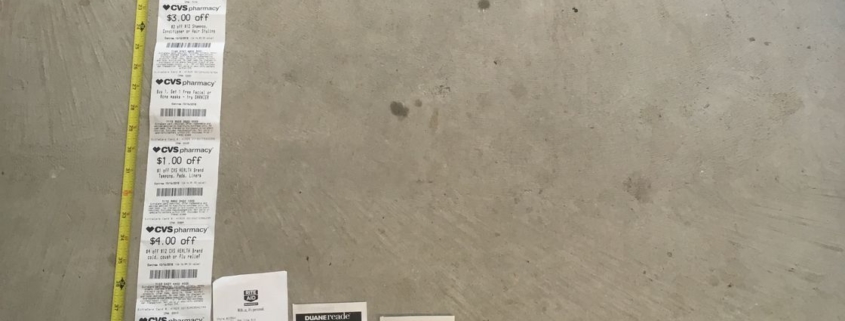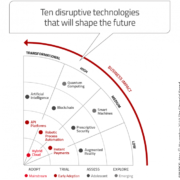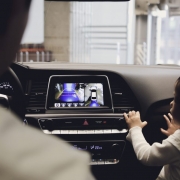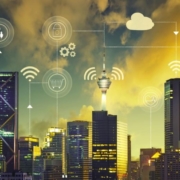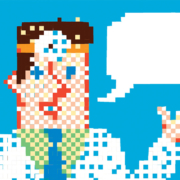Blame Big Data for CVS’s endless miles of receipts
Buy a single item at CVS and you can end up with a 4′–6′-long ribbon of register tape, a kind of orgy of coupons and come-ons.
The phenomenon of the farcically long CVS receipt goes back to 2008 or so, when the company started buying data-mining services to plumb its customer loyalty card data, generating coupons on the fly.
This apparently worked — for a while. But stimulus regresses to the mean(AKA: we get used to stuff) and so CVS needed to do more to get the same yield, and other companies started printing their own super-long receipts, poisoning the well by getting us all more adapted to (and thus unimpressed by) the phenomenon.
Register coupons have a long and weird history. Getting a coupon into the hands of someone who is likely to use it is hard because most people won’t use most coupons. Consumer packaged goods companies like Unilever and P&G have spent decades experimenting with getting grocers to hand coupons out to people who are cashing out, on the grounds that someone who is buying groceries has a high probability of being the kind of person who buys groceries. But the problem is, someone who has just bought groceries is also likely to be someone who won’t need to buy groceries for a while.
There are lots of complicating factors here: the richer you are, the more willing you might be to try a new product (if you’re poor and you buy a laundry detergent you don’t end up liking, you can’t necessarily afford to throw it away and go back to your old brand) — but rich people are also less coupon-clippy, meaning that register coupons (intended to entice the purchaser into trying something new, because you don’t need to convince someone to buy a product that they already routinely purchase) are more likely to go into their garbage than an envelope that is put aside for the next shopping trip.
CVS coupon redemption peaked around 2010 or 2011, and the receipts have grown since, as they chase the same outcome from an inured public. But as customer loyalty cards have disappeared into apps, CVS has switched to offering “digital coupons” — AKA notifications that use surveillance capitalism to offer you things all the time, and especially while you’re shopping.
But the CVS register-tape arms-race has irreversibly changed the way businesses think about receipts, turning them into “a forum for stores to tell you things,” in the words of Vox’s Rachel Sugar, who notes that “My receipts offered me information about other, even more rewarding rewards programs I could join. The told me about satisfaction surveys I could take where I might win $1,000, or $3,000, depending on the drugstore. They updated me on my rewards points. They explained how rewards points work. It was like a satisfying chat with a very rewards-points-oriented friend.”
CVS takes … a different approach. My regular receipt was a normal receipt length: 10.5 inches. Is that a lot of inches to verify I bought cough drops? I mean, it is, but I wouldn’t make a Halloween costume about it.
My ExtraCare receipt, however, was 4 feet and 1.5 inches long, or roughly the height of the average American 8-year-old. I have never used a coupon from a CVS receipt, but while they print, I am filled with a sense of possibility. Maybe this is the month I save $2 on Garnier Fructis hair products, and also start using Garnier Fructis hair products. It is a thrill that I imagine others get from playing slots.
This receipt included coupons for Colgate toothpaste; vitamins (all); shampoo, conditioner, or hairstyling products more than $12; assorted menstrual products; medicine for children; medicine for adults; heartburn medicine; and 40 percent off Neutrogena makeup. All this for buying cough drops.

